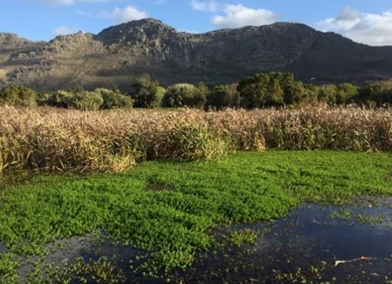Compared to the year 2005, the number of alien species is expected to increase by 36% by the middle of this century. The majority of these newcomers are insects. These are the results of a study by an international team of researchers led by Dr Hanno Seebens of the Senckenberg Biodiversity and Climate Research Center in Germany. For their study, recently published in the scientific journal Global Change Biology, the team calculated the anticipated accumulation of alien species at a global level and across major species groups by the year 2050.
Aliens are on the loose around the globe. But unlike in science fiction movies, they did not land in a UFO but arrived by ship, airplane, or truck. By the year 2005, their worldwide number had already reached more than 35,000. We are talking about plant and animal species that are introduced to a new area trough accidental or deliberate actions of humans and is also referred to as ‘alien species’. Thanks to the global trade and transportation network, these species increasingly invade habitats outside their home range.
Dr Seebens together with a team of international researchers, including DSI-NRF Centre for Invasion Biology (C∙I∙B) Associates Franz Essl (University of Vienna, Austria) and Tim Blackburn (Zoological Society of London, UK) and Piero Genovesi (Institute for Environmental Protection and Research, Italy) simulated what we can expect in the future. Based on observations over the past decades, the scientists developed a computer model that predicts the number of new species by 2050.
“The number of alien species will continue to increase. Worldwide, by 2050 we will see an increase of 36 percent in alien plant and animal species, compared to the year 2005,” explains Dr Seebens.
With their prognosis, the scientists entered uncharted waters, since previous studies on future predictions of alien species only covered individual groups of organisms or single countries. The model indicated that the largest increase is expected in Europe, where the number of alien species will increase by 64% by the middle of the century. Additional hotspots are found in the temperate latitudes of Asia, North America, and South America. The African continent is expected to see an increase of 39%. On the other hand, the lowest relative increase in non-resident species is expected in Australia.
“When we take a look at which groups of animals and plants are about to invade new habitats, we predominately find insects and other arthropods such as arachnids and crustaceans. The number of alien species within these groups will show an obvious increase in every region of the world by the middle of the century – by as much as 117% in the temperate latitudes of Asia,” explains one of the study’s co-authors, Dr Franz Essl of the University of Vienna and C∙I∙B Associate.
The calculations show that in certain animal groups the tempo of the invasion of new species continues to increase. On a global scale, by 2050, arthropods and bird species, in particular, will arrive in new areas faster than before, compared to the period from 1960 to 2005. Mammals and fishes, on the other hand, will conquer new habitats around the globe at a slower speed than previously.
A reversal in the spread of alien species is not in sight, as global trade and transportation, which allow many species to invade new habitats as “stowaways,” are only expected to increase in the coming decades. “We will not be able to entirely prevent the introduction of alien species, as this would mean severe restrictions in international trade. However, stricter regulations and their rigorous enforcement could stem the flood of new species. The benefit of corresponding measures has been documented in several studies. Particularly in Europe, where regulations are still comparatively lax, there is a great potential for measures to curtail the introduction of new alien species,” adds Seebens in closing.
Read the paper in Global Change Biology
Seebens H, Bacher S, Blackburn TM, et al. 2020. Projecting the continental accumulation of alien species through to 2050. Global Change Biology. https://doi.org/10.1111/gcb.15333
For more infomation, contact Hanno Seebens at hanno.seebens@senckenberg.de



